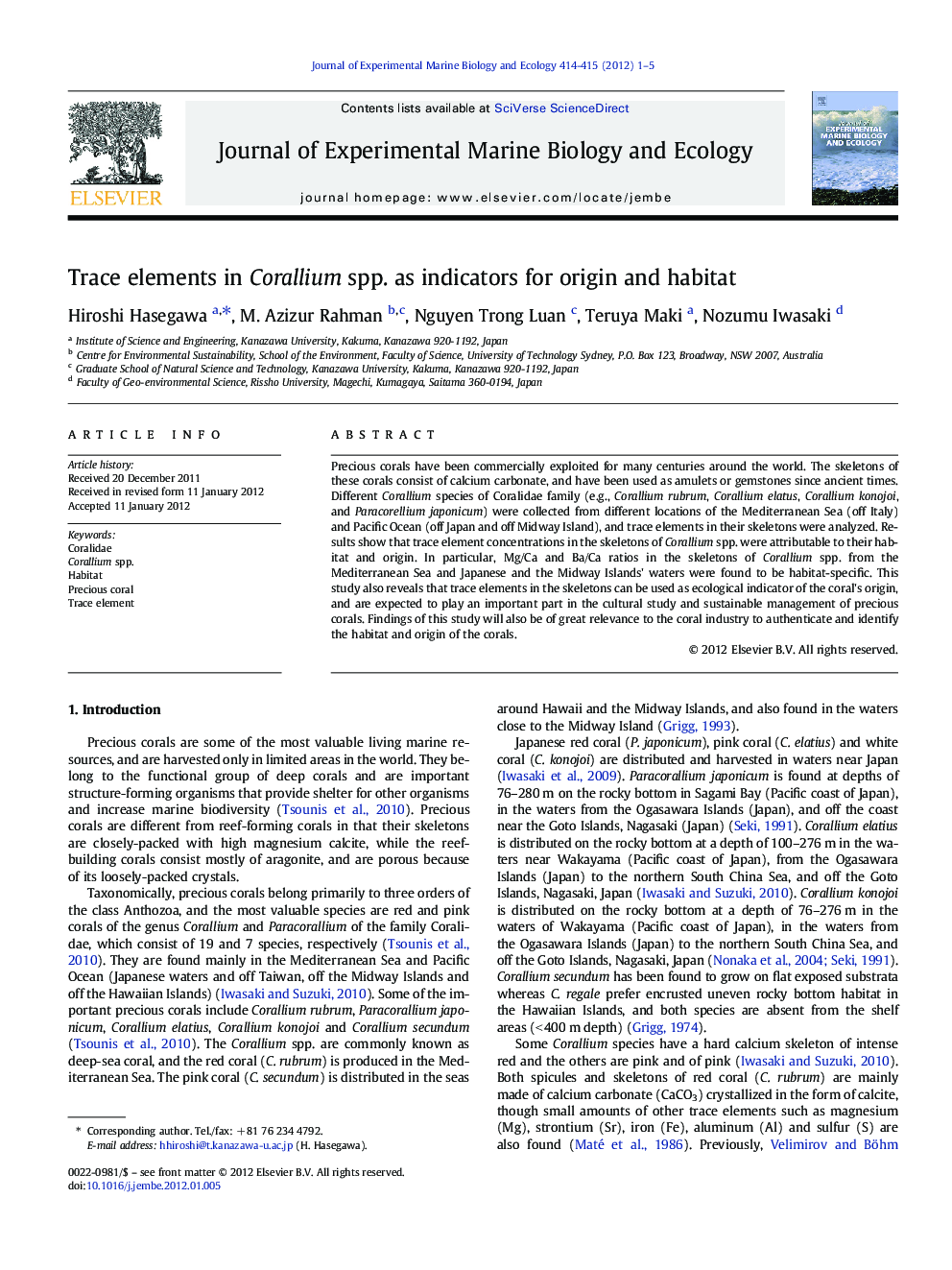| Article ID | Journal | Published Year | Pages | File Type |
|---|---|---|---|---|
| 4396018 | Journal of Experimental Marine Biology and Ecology | 2012 | 5 Pages |
Precious corals have been commercially exploited for many centuries around the world. The skeletons of these corals consist of calcium carbonate, and have been used as amulets or gemstones since ancient times. Different Corallium species of Coralidae family (e.g., Corallium rubrum, Corallium elatus, Corallium konojoi, and Paracorellium japonicum) were collected from different locations of the Mediterranean Sea (off Italy) and Pacific Ocean (off Japan and off Midway Island), and trace elements in their skeletons were analyzed. Results show that trace element concentrations in the skeletons of Corallium spp. were attributable to their habitat and origin. In particular, Mg/Ca and Ba/Ca ratios in the skeletons of Corallium spp. from the Mediterranean Sea and Japanese and the Midway Islands' waters were found to be habitat-specific. This study also reveals that trace elements in the skeletons can be used as ecological indicator of the coral's origin, and are expected to play an important part in the cultural study and sustainable management of precious corals. Findings of this study will also be of great relevance to the coral industry to authenticate and identify the habitat and origin of the corals.
► Mg/Ca and Ba/Ca ratios in the coral skeletons from different waters were found to be habitat-specific. ► Trace elements in axial skeletons of precious corals are habitat-specific rather than species-specific. ► The Mg/Ca and Ba/Ca ratios in axial skeletons can be used to identify the harvested areas of the coral products.
